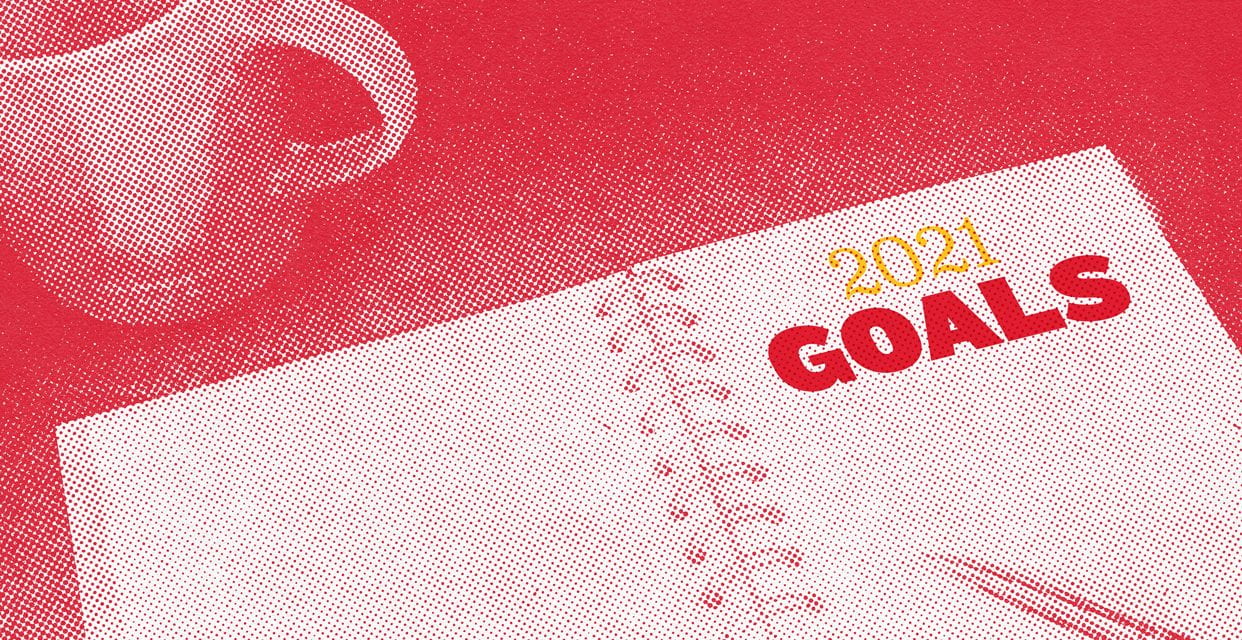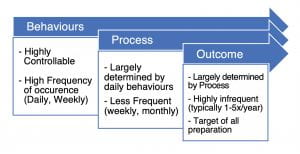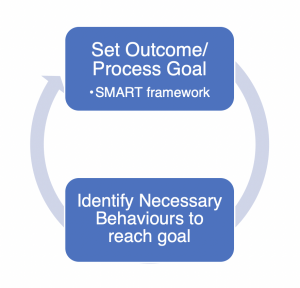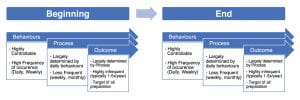Goal setting is a process that people encounter in their daily life with things of large and small consequence. Generally, it is something that we do without consciously thinking about it. For example, planning out your morning schedule to arrive at an appointment on time is a form of goal setting. We have an objective, then create a plan for behaviour’s that will make achieving that objective possible. We set an alarm in the morning, leave our home at a specific time, ensure we have enough gas in the tank to get us to our destination etc.
One distinction to make between something as commonplace as planning your commute and something larger, like a lofty fitness goal, is the commute happens regularly and on a short timeframe. Therefore, we don’t have to spend a large amount of time changing our behaviour to achieve it. It is a process that we have gone through many times and, as a result, we are better prepared for the journey.
Fitness, not unlike the commute, is a process that once it has been rehearsed a few times, becomes more habitual and easier to manage from a process stand-point. However, the challenge becomes creating a framework to navigate the process the FIRST time we take part in it, so that it may become more habitual in the future. The first, and perhaps most important part of this, is a proper goal setting.
When setting any goals, a popular framework is called the SMART framework. This framework has been around for quite some time now and is built around making the goal Specific, Measurable, Action-oriented, Realistic, Time-sensitive. By making goals in this way, determining success boils down to a yes or no question because the goal is quantifiable and based on specific measures and timelines.
In terms of the focus of the goal, broadly speaking, there are two categories of goals- Outcome-based goals and Process-based goals. Outcome-based are just that, focused on the outcome – winning a championship, increasing wealth, changing body composition etc. Process-based goals emphasize behaviour’s that make achieving outcome-based goals more likely.
Once you’ve chosen an outcome that aligns with the SMART framework, it now becomes easier to focus your time on the process-based goals. One benefit of this is it breaks the outcome goal into smaller components, which are more within our control and make the outcome goal more likely over the long-term.
Also, when it comes to goal difficulty, not all goals are created equally. Even if a variety of different goals fit into the SMART framework, certain goals may be more difficult due to there being more confounding variables at play. A simple way to navigate this problem, regardless of goal difficulty, is to repeat the same sequence of identifying goals and their corresponding processes multiple times. In other words, identifying process goals and the behaviours needed to achieve them and then turning the behaviours into your new process-based goals.
If you go through this activity enough times, you’ll quickly notice that by distilling a potentially lofty outcome goal into small actionable steps that are needed to achieve the goal, we reframe what is deemed a “success” into much smaller, and controllable behaviours.
This is beneficial on multiple levels. For one, if people have been unsuccessful in their performance or achievement of their goals, there is evidence to suggest that they will tend to decrease effort and motivation moving forward (Dweck, 1999). Simply put, the lack of success makes people feel like they are less capable of success in the future. By making the goals more within our control, we make it easier for us to feel successful which breeds feelings of competence and intrinsic motivation towards future challenges.
So, if you’re struggling to achieve the first step in your process-based goals, and your goals align with the SMART framework, try making an additional process goal that emphasizes the behaviours needed to make the initial outcome goal more achievable. Repeat this process until you find the appropriate behaviours that work for you. You’ll find once you start achieving the milestones that are along the way to your ultimate goal, your confidence will improve and so will your dedication to the process-based goals that will get you there.
by Devin Clayton
Devin is a Bachelor of Physical Education graduate from the University of Alberta. He is a Certified Strength and Conditioning Specialist through the NSCA and is an NCCP certified Weightlifting coach.
Dweck, C. (1999). Self-Theories: Their Role in Motivation, Personality, and Development.





